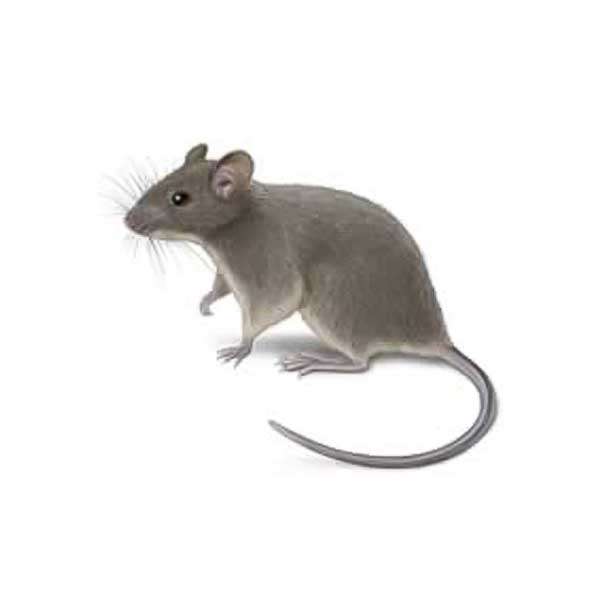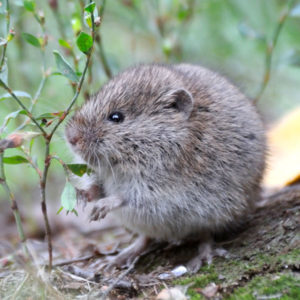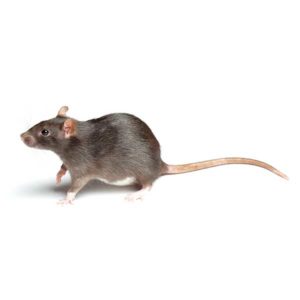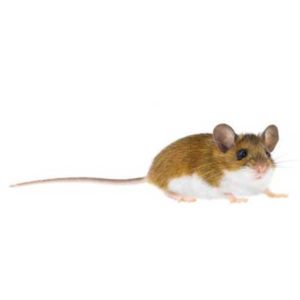House Mice in North Carolina
The house mouse is found across the United States and ranks as the number one rodent pest in most cities. House mice are commensal, meaning they are generally found living in close association with humans and dependent upon the human habitat for shelter and food. House mice thrive throughout the year and can be found in homes, commercial buildings, open fields, and agricultural lands. They contaminate food meant for humans and pets as they forage, dropping feces and urine along the way. House mice cause considerable damage to structures by chewing through walls and transmit pathogens that cause diseases like salmonella, a form of food poisoning.
Signs of a House Mouse Infestation
Signs of a house mouse infestation include the presence of droppings, which are small, dark, and pointed at both ends. You might also notice gnawed materials, such as wires, insulation, and food packaging. House mice often leave greasy rub marks along walls and baseboards due to their oily fur. Additionally, the presence of nests made from shredded paper, fabric, and other soft materials can indicate an infestation. Hearing scratching or scurrying noises, particularly at night, is another common sign.
Habitat, Diet & Life Cycle
Where Do Deer Mice Live?
Outdoors, house mice construct nests in fields and beneath trees and shrubs. Indoors, mice will build nests in quiet undisturbed places like wall voids, kitchen cabinets, attics, and garages. Droppings, fresh gnaw marks, and tracks or rub marks indicate areas where mice are active. Nests are made from finely shredded paper or other fibrous material, usually in sheltered locations. House mice have a characteristic musky odor that reveals their presence. Mice are active mostly at night, but they can be seen occasionally during daylight hours.
Diet
House mice are omnivorous and will eat a wide range of foods. They prefer grains and seeds but are also attracted to human foods and can consume almost anything available, including pet food and food scraps. Their opportunistic feeding habits are particularly troublesome in homes and food storage areas.
Life Cycle
The life cycle of a house mouse involves several stages: birth, juvenile, and adult. Female house mice can produce up to 10 litters per year, with each litter containing 5 to 12 young. The gestation period is about 19 to 21 days, and the young are weaned by three weeks old. House mice reach sexual maturity at about six weeks of age and can live up to one year in the wild, though indoor mice often live longer due to fewer threats and more consistent food sources.
House Mouse Behaviors, Threats, or Dangers
The house mouse is omnivorous but prefers grains and cereals. House mice contaminate food and are implicated in the transmission of diseases such as salmonella and bubonic plague. The house mouse can cause significant damage to structures by gnawing and tunneling through walls. Mice have also been implicated in the generation of fires and explosions in homes and buildings. Chewed, exposed wires inside walls can spark, causing interior walls to catch fire.
If you have a house mouse infestation in your North Carolina property, always contact a licensed rodent control company.
How to Get Rid of House Mice?
To get rid of house mice, start by identifying and sealing entry points in your home, such as cracks and gaps in walls, doors, and windows. Remove food sources by storing food in airtight containers and maintaining a clean living environment. Traps and baits can effectively reduce their population, but for extensive infestations, it’s best to consult with a professional pest control service to ensure thorough and safe removal.
House Mouse Prevention Tips
To keep house mice out of your home, it’s essential to combine exclusion techniques with good sanitation practices. Inspect your home frequently and seal any potential entry points, including cracks in the foundation, vents, and gaps around utility pipes. Maintain cleanliness by eliminating food debris and storing food in airtight containers. Additionally, minimizing clutter, especially in storage areas, will help remove potential nesting spots.
Need help with House Mice control?
FAQs
What Attracts Mice to Your Home?
Mice are attracted to homes by the availability of food, water, and shelter. Easily accessible food sources, such as crumbs, pet food, and poorly stored pantry items, can draw them indoors. Additionally, cluttered and undisturbed areas provide ideal nesting sites, while warmth and protection from predators make homes appealing.
Will House Mice Get in Your Bed?
While house mice are curious and may explore different areas of a home, they typically avoid areas with a lot of human activity. It is uncommon for mice to get into beds, but they may occasionally venture onto them if there is food present or if the bed is near their nesting area.
How Long Do House Mice Live?
House mice typically live up to one year in the wild, facing threats from predators and harsh environmental conditions. However, indoors, where they have access to consistent food and shelter, house mice can live up to two years or more.




